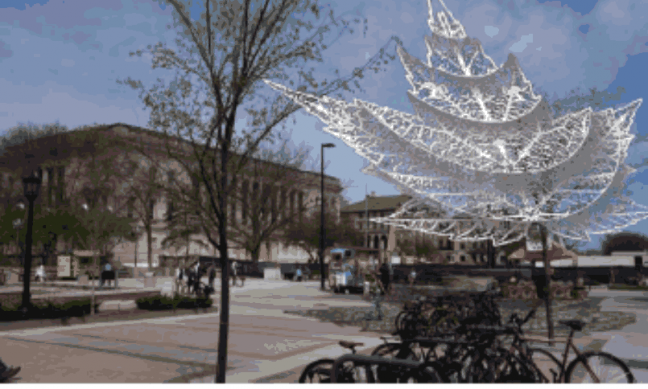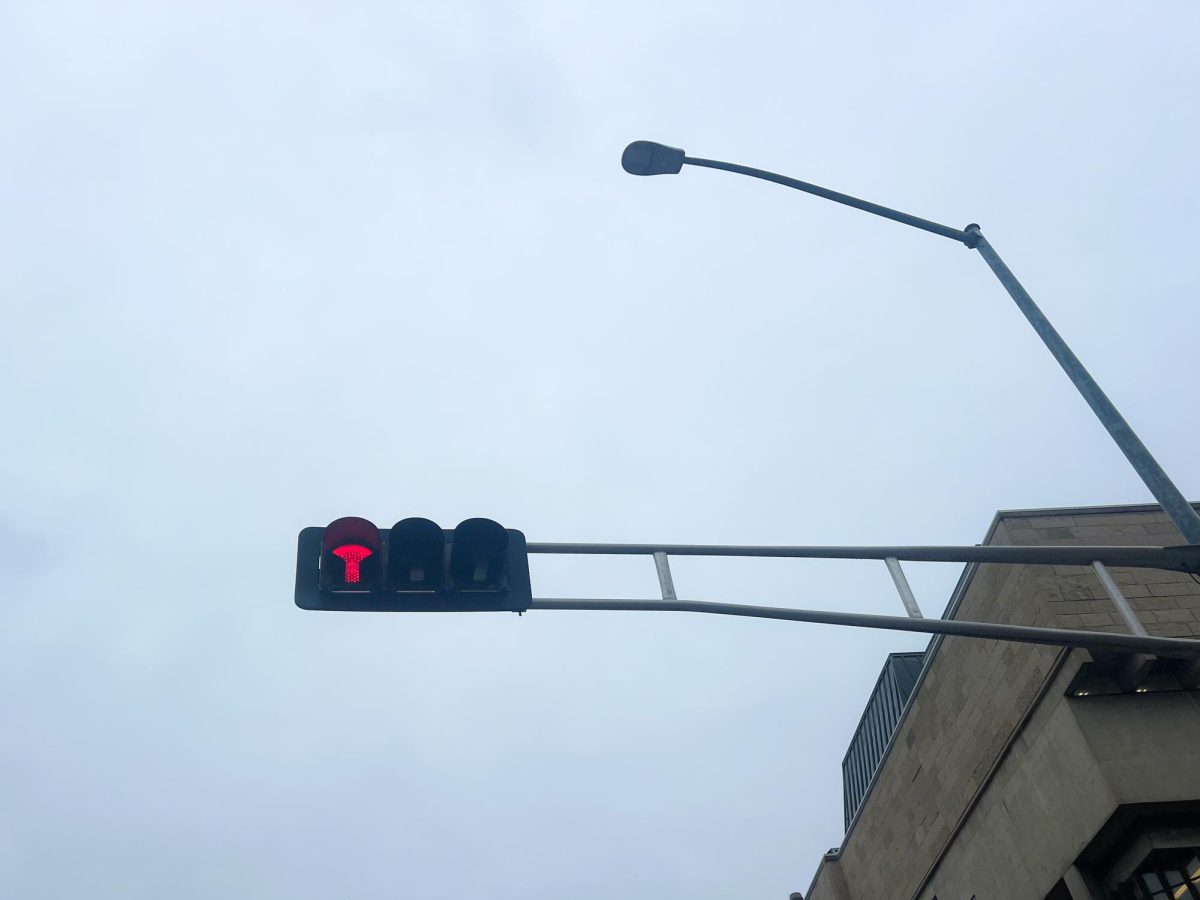A city committee finalized plans Thursday night for a project to redesign the 700 and 800 blocks of State Street and Library Mall, including a public art sculpture of a maple leaf.
The State Street Design Project Oversight Committee heard from consultant Ken Saiki, who presented plans to remove the elevated stage at the intersection of State Street and Library Mall, as well as to remove the clock tower in the center of the area.
“I think we’ve made tremendous progress and we’re clearly ready to take the tentative design to the public for their review and comment,” Ald. Mike Verveer, District 4, said.
The committee also approved a tentative design for a large statue of a maple leaf, proposed by artist Jill Sebastian.
The sculptural maple leaf will be integrated into a raised platform in the center of the Library Mall area, near Pres House, Sebastian said. The sugar maple is the state tree, she said, adding she wants the statue to be memorable.
The piece will have a width and length of 30 feet and will be about 12 feet high, Sebastian said. The leaf would be made of laser-cut stainless steel and would be integrated into one of the raised planters that are also proposed for the area, she said.
Chris Petykowski, of the city engineering division, said he needs more information on fiscal, maintenance and other requirements for the statue before the city gives full approval for it.
“We just need a little more before I’m ready to just approve this part of the plan,” Petykowski said.
Additionally, Saiki presented plans for electric information kiosks in the area, similar to those near the Overture Center. He also highlighted ideas for raised, bar-height tables as possible outdoor furniture for the space.
Biking through Library Mall and the 800 block of State Street area will also now be legal, Saiki said.
Saiki also incorporated Mayor Paul Soglin’s idea of offering free public binoculars in the area, to allow people to look down State Street toward the capitol.
There was some concern about the design for the 800 block of State Street near the bottom of Bascom Hill, as the proposed pavement may make it easier for food carts to park in that area. Jim Draeger, of the Wisconsin Historical Society, said this could interfere with historical district qualifications.
“We don’t want to see food carts in there because of the visual impact of [the carts] on what … is a historic streetscape,” Draeger said.
The Historic District has regulatory authority on some aspects of the design project, because the area is a national register-listed historic district, Draeger said.
To finish the design process, the committee will hold a third and final public hearing within the next few weeks at Memorial Union. The committee will hear local comments on the plans, and project staff will receive feedback and incorporate it into the plans, making whatever tweaks they deem necessary.
The plans will then be brought back to the oversight committee, who will vote on the designs and send the final plans to City Council. If the plans are passed, constriction will begin in the area in April 2014 and will likely conclude in August.













